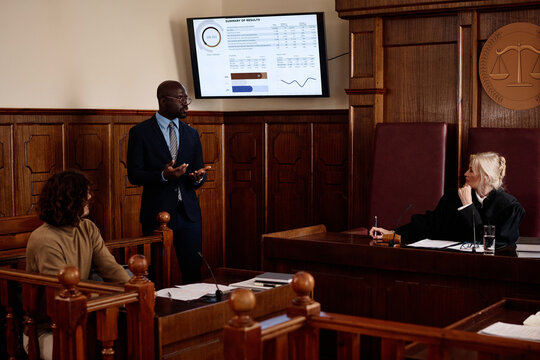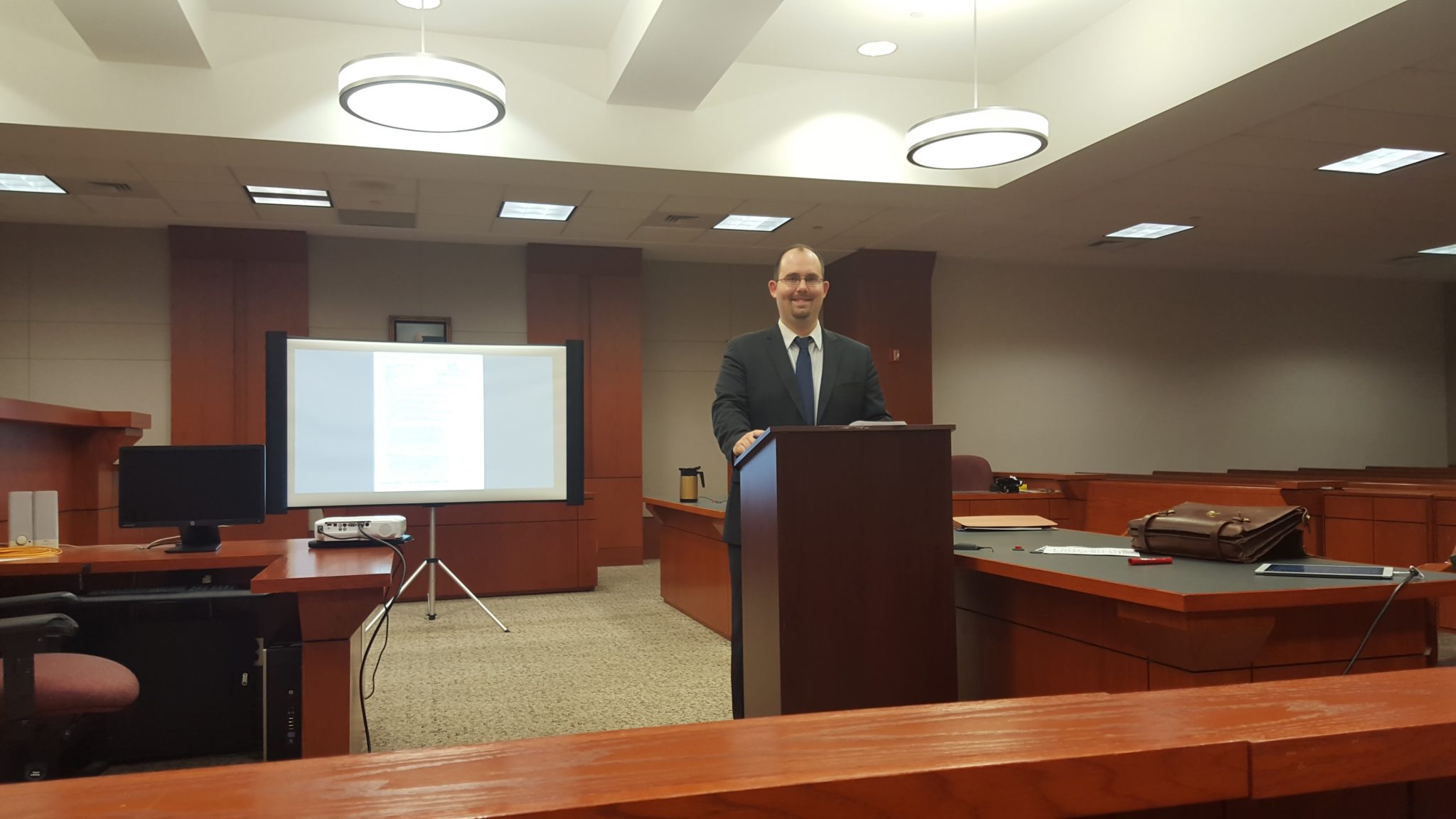Navigating the Intricacies of Trial Presentations: Tips for Seamless Distribution and Compelling Debates
In the realm of legal process, the art of trial presentation stands as a critical factor of success. As lawyers navigate the detailed web of court room dynamics, the capability to effortlessly deliver disagreements and proof while captivating the court's focus becomes extremely important. The complexities intrinsic in test presentations need a fragile balance of approach, finesse, and skill. By developing strategies that make certain a sleek shipment and crafting engaging debates that resonate with the audience, lawful specialists can considerably improve their campaigning for. In a globe where persuasion rules supreme, mastering the complexities of trial discussions is not simply an alternative yet a need for those seeking to prevail in the courtroom.

Recognizing Trial Objectives
To efficiently browse a test, it is crucial to have a clear understanding of the objectives that need to be accomplished. Before tipping right into the court room, lawful groups have to define their goals and preferred results. These goals act as leading concepts throughout the test, forming approaches and affecting decision-making procedures.
Recognizing test objectives involves an extensive analysis of the case, legal criteria, and the customer's benefits. Trial Presentations. It calls for a careful assessment of the truths, determining crucial concerns, and preparing for possible difficulties. By setting particular and measurable objectives, attorneys can tailor their debates and discussions to line up with the preferred results
Moreover, a clear grip of trial objectives enables lawful teams to prioritize proof, witnesses, and lawful arguments properly. It enables the advancement of a coherent story that resonates with the discretionary, enhancing the overall instance presentation.

Organizing Proof Successfully
Having a clear understanding of trial purposes lays the foundation for arranging evidence properly in legal process. By aligning the discussion of evidence with the desired end results of the trial, lawful groups can enhance their debates and improve their persuasiveness.
An additional secret component in organizing proof effectively is establishing a sensible flow. Offering proof in a sequential and meaningful fashion can help develop an engaging narrative that supports the lawful debates being made. Additionally, utilizing aesthetic aids such as charts, timelines, or charts can better enhance the organization of evidence and aid in making clear complex connections or series of occasions.
Furthermore, guaranteeing that all proof offered is admissible and relevant to the situation is crucial. Unimportant or inadmissible proof can take away from the toughness of the debate and possibly damage the credibility of the here and now celebration. A careful evaluation and choice procedure ought to be carried out to include only the most impactful and legally sound proof in the trial presentation.
Crafting Persuasive Stories
Crafting engaging narratives plays a crucial role in offering convincing debates during lawful proceedings. When creating a narrative for a test presentation, it is vital to develop a clear storyline that highlights vital points and attaches them in a coherent fashion. By weaving together evidence, testament, and legal useful source disagreements right into a persuasive and natural story, lawful experts can properly advocate for their customers and raise the possibility of a desirable outcome in the court.
Understanding Visual Aids
Efficient usage of visual aids is essential to enhancing the impact and clearness of trial presentations. Visual help, when used strategically, have the power to simplify intricate information, strengthen bottom lines, and leave a long lasting perception on the court and court. To understand visual aids in trial presentations, it is vital to make certain that they are clear, concise, and relevant to the arguments being made.
When integrating visual aids, such as charts, timelines, graphs, or photos, into a trial presentation, it is vital to keep them aesthetically appealing yet specialist. The visuals need to enhance the spoken debates, giving a graph of the info being gone over without overwhelming the audience with unnecessary details.
In addition, exercising with the aesthetic aids ahead of time is essential to ensure a smooth distribution throughout the trial. Familiarizing oneself with the web content, changes, and timings of each visual aid can help keep the circulation of the presentation and prevent technological problems that may occur.
Delivering Impactful Closing Debates
An engaging closing disagreement offers as the conclusion of a trial discussion, enveloping the core narrative and encouraging the judge and jury in the direction of a beneficial choice. Begin by outlining the primary debates that support your client's position, stressing why the evidence provided throughout the trial supports your story.
Moreover, integrating psychological allure can even more enhance your closing debate. By attaching and humanizing the case on an individual degree with the decision-makers, you can evoke empathy and understanding, influencing their assumption of the realities presented. Furthermore, stating the lawful standards that should be satisfied for a desirable judgment can reinforce the validity of your setting. Eventually, a well-crafted closing debate need to leave a lasting impression, compelling the judge and jury to rule in your client's favor.
Final Thought
To conclude, grasping trial presentations involves understanding goals, arranging evidence, crafting narratives, utilizing visual help, and supplying impactful closing debates. By he has a good point carrying out these methods successfully, attorneys can present their case flawlessly and make engaging disagreements in the court. It is essential to navigate the intricacies of trial discussions with precision and skill to accomplish success in legal proceedings.
By straightening the discussion of evidence with the wanted end results of the trial, legal groups can enhance their arguments and boost their persuasiveness (Trial Presentations). To grasp visual help in trial presentations, it is critical to make sure that they are clear, concise, and relevant to the debates being made
A compelling closing debate serves as the culmination of a test presentation, enveloping the core narrative and encouraging the judge and court towards a favorable choice. Begin by describing the major disagreements that sustain your client's placement, highlighting why the proof provided throughout the here are the findings test supports your story.In conclusion, grasping trial presentations entails comprehending purposes, organizing proof, crafting narratives, using aesthetic aids, and providing impactful closing arguments.